
MarathonTM CS
User Guide

MarathonTM CS
User Guide

??2009 Britax Child Safety, Inc. All rights reserved. Printed in U.S.A P332400_R1:04.09 This product and its components are subject to change without notice.
1

WARNING!
DEATH or SERIOUS INJURY CAN OCCUR:
???Use only in a
???Use only with children who weigh between 5 and 65 lbs (2.3 and 29.5 kg) and whose height is 49 inches (124.5 cm) or less. Rear- facing for children who weigh between 5 and 35 lbs (2.3 and 15.9 kg) and
???Snugly adjust the belts provided with this child restraint around your child. A snug strap should not allow any slack. It lies in a relatively straight line without sagging. It does not press into the child???s flesh or push the child???s body into an unnatural position.
???Secure the top anchorage strap provided with this child restraint.
???Secure this child restraint with the vehicle???s child restraint anchorage system if available or with a vehicle belt.
???Follow all instructions on this child restraint and in the written instructions located under the child seat cover.
???Register your child restraint with the manufacturer.
???To prevent injury due to deterioration or hidden damage, discontinue use of a child seat that is older than six years or has been in a moderate or severe crash. See Serial Number and Manufacture Date Label located on child seat (see page 9).
???This child seat must not be used in the home, in boats, or other
???Based on crash statistics, the National Highway Traffic Safety Administration (NHTSA) recommends that parents select the
back seat as the safest location for a properly installed child seat. Please study the Vehicle Compatibility (pages
???Secure this child seat even when it is not occupied. In a crash, an unsecured child seat may injure vehicle occupants.
???When using in a vehicle with air bags, refer to your vehicle owner???s manual for child seat installation instructions and precautions.
???Never use adjuster strap to lift or carry this child seat. Doing so could cause damage to harness adjuster and webbing. Always carry this child seat by its shell or tether straps.
???The primary protection for occupants of a vehicle in a collision is the body of the vehicle itself. A child seat will not protect a child when a vehicle is seriously impacted. However, correctly installed, a child seat will substantially improve chances for survival in most crashes. Make sure all users fully understand the correct ways to use this child seat in a vehicle.
???The use of
???HUGSTM chest pads must be installed for

Safety Information
Important Notes
???Verify child seat is secure and harness is properly adjusted around child each time child seat is used.
???Adjust harness to fit clothes the child is wearing. Remove bulky coats and/or jackets before putting child in child seat.
???Cover child seat when vehicle is parked in direct sunlight. Parts of child seat could become hot enough to burn a child.
???Store child seat in a safe place when it is not being used. Avoid placing heavy objects on top of it.
???Do not leave children alone in a vehicle, even for a short time.
???Do not, except as described in this booklet, attempt to disassemble any part of the child seat or change the way its harness or vehicle???s seat belts are used.
???Do not leave loose objects, e.g. books, bags, etc., in the back of a vehicle. In the event of a sudden stop, loose objects will keep moving, potentially causing serious injuries.
???Do not leave folding vehicle seats unsecured or unlatched. In event of a sudden stop, a loose seat back could prevent child seat from protecting the child as well as it should.
???Do not allow children to play with this or any child seat.
???Do not use anything to raise child seat off vehicle seat except as described in these instructions. In a crash, child seat could slide and may not adequately protect the child.
Safety Information
Certification
This child seat system conforms to all applicable Federal Motor Vehicle Safety Standards. This child restraint is certified for use in motor vehicles and aircraft.
Registration
Child seats can be recalled for safety reasons. You must register this child seat to be reached in a recall. Send your name, address, and the child seat???s model number and manufacturing date to Britax Child Safety, Inc., 13501 South Ridge Drive Charlotte, NC 28273, or call
Serial Number:___________________________________
Batch Number:___________________________________
Date of Manufacture:______________________________
WARNING! DO NOT place a child seat

Safety Information
Important Harness Adjustments
According to the American Academy of Pediatrics:
All infants should ride
Use
???who weigh between 5 and 35 lbs (2.3 ??? 15.9 kg) and
???the top of the child???s head is at least 1??? (2.5 cm) or more below the top of the child seat (Fig. A) and
???the harness straps are in the nearest slots at or a
If the child cannot be secured within these requirements because the child exceeds height or weight requirements, review the
If the child cannot be secured within these requirements because the child is too small, selection of a different child seat (such as an infant carrier) may be required.
IMPORTANT: See Adjusting Harness Slot Height on page 31.
WARNING!
Do NOT use the child seat
???the child is less than 5 lbs (2.3 kg) in weight or
???the child exceeds 35 lbs (15.9 kg) in weight or
???the top of the head is less than 1??? (2.5 cm) from the top of the child seat (Fig. A) or
???the harness straps are in a slot above the child???s shoulders.
6
Safety Information
Use
???who are at least one year of age and
???who weigh between 20 and 65 lbs (9.1 ??? 29.5 kg) and
???49??? (124.5 cm) or less in height and
???the top of the child???s ears are below the top of the child seat and
???the harness straps are in the nearest slots at or above the child???s shoulders, parallel to level ground (Fig. B).
IMPORTANT: When using
than would be used when the seat is upright. See Adjusting Harness Slot Height on page 31.
WARNING!
Do NOT use the child seat
???the child is less than one year of age or
???the child is less than 20 lbs (9.1 kg) in weight or
???the child exceeds 65 lbs (29.5 kg) in weight or
???the child exceeds 49??? (124.5 cm) in height or
???the top of the ears are above the top of the child seat or
???the top harness slots fall below the child???s shoulders, parallel to level ground (Fig. B)
7

Child Seat Features
1
Child Seat Features
19
20
21
24
23
26
27
28
19Serial Number & Manufactured Date (under cover)
20
21
22Harness Yoke
23Belt Guard
24Shell
25
26
27LATCH Bar
28Base
8
IMPORTANT: When not in use, this user guide should be stored under the cover.
DO NOT discard the foam inserts found under the cover.
9

Vehicle Compatibility
Incompatible Vehicle Belts
 WARNING! The following types of vehicle belts are NOT compatible with this child seat:
WARNING! The following types of vehicle belts are NOT compatible with this child seat:
Vehicle Compatibility
Vehicle Buckle Positions
 WARNING!The position of the vehicle belt buckle can adversely affect the stability of the child seat.
WARNING!The position of the vehicle belt buckle can adversely affect the stability of the child seat.
If the buckle lies near the incorrect position ( ) when
) when  the vehicle belt is tightened, try fitting the child seat
the vehicle belt is tightened, try fitting the child seat  in another seating position in the vehicle OR consult
in another seating position in the vehicle OR consult
your vehicle owner???s manual to see if you can lower
1 Vehicle belts with top or bottom anchor points on the vehicle door.
3
2Motorized,automaticvehicle belts
4 Lap belts forward of the vehicle seat bight.
the vehicle buckle position by twisting the vehicle 



 buckle stalk. If it is not possible to achieve the correct
buckle stalk. If it is not possible to achieve the correct 

 position ( ) for the buckle, then another seating
position ( ) for the buckle, then another seating 
 position MUST be used.
position MUST be used. 
Vehicle Seating Positions
 WARNING! Some vehicles have no seating positions which are compatible with this child seat or any other child seat. If in doubt,
WARNING! Some vehicles have no seating positions which are compatible with this child seat or any other child seat. If in doubt,
contact the vehicle manufacturer for assistance.
WARNING!
DO NOT place a child seat
5 Lap belts that have a retractor that locks only in case of a sudden stop (emergency locking retractor or ELR).
10
occur. See your vehicle owner's manual for child seat installation instruc- tions. The back seat is the safest place for children 12 and under.
11
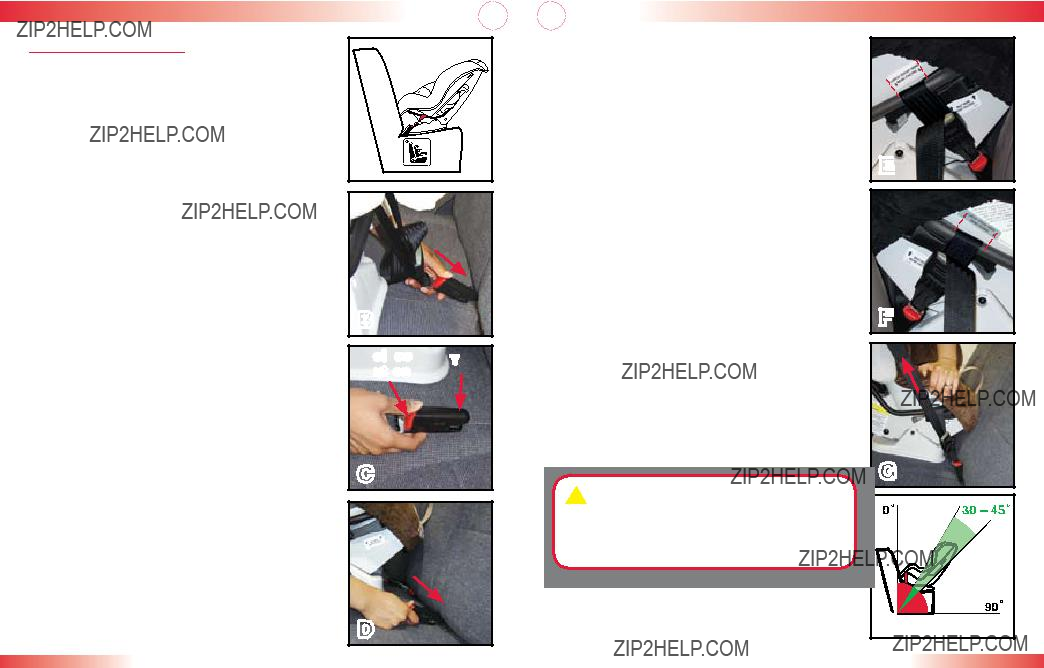
Installation:
Installation:
LATCH Installation
???Figure A illustrates a
???Verify that your vehicle is equipped with LATCH anchors. If LATCH anchors are not available, you must use the vehicle belt installation methods.
1If stored, remove the LATCH connectors from the storage slots under the cover (page 29) and pass them through their adjacent belt slots.
2Press and hold the first LATCH adjuster release button, then pull the LATCH strap to full length. Repeat for the remaining LATCH connector.
3Recline the child seat and place
Recline Adjustment on page 29.
4Attach one LATCH connector to its adjacent vehicle LATCH anchor (Fig. B) in the upright position (Fig. C).
???An audible click confirms attachment.
???Ensure that the LATCH strap is not twisted.
TIP: You may need to turn the front of the child seat toward you for easier access to the vehicle LATCH anchor.
5Attach the remaining LATCH connector to its adjacent vehicle LATCH anchor (Fig. D) in the upright position (Fig. C).
???An audible click confirms attachment.
???Ensure that the LATCH strap is not twisted.
NOTE: If an audible click is not heard when connecting either LATCH connector, the LATCH strap may be twisted, or there may be debris in the LATCH connector. Correct either situation before continuing with the installation process.
6 Align each LATCH strap on the LATCH bar
12
a
b
Release Top
Button
c
d
with the ???LATCH Strap Here
7 Push the child seat firmly into the vehicle seat while pulling each LATCH strap tight (Fig. G).
IMPORTANT: Ensure the LATCH strap does not fold into the LATCH adjuster while tightening.
8 Verify that all connections are secure, the LATCH strap is aligned to the ???LATCH Strap Here
???The child seat is secure when it cannot be moved more than 1 in. (2.5 cm)
???When properly installed in the
???If necessary, the proper recline angle can be achieved by placing a rolled towel or pool noodle in the vehicle seat bight to level the child seat???s base.
???
 WARNING! Do not raise the child seat off the front edge of the vehicle seat. This could cause your child seat not to perform as intended.
WARNING! Do not raise the child seat off the front edge of the vehicle seat. This could cause your child seat not to perform as intended.
e
f

Installation:
Installation:
???Figure A illustrates a
???When not in use, always store the LATCH connectors in the storage slots. See page 29.
1Recline the child seat then place it
2Lift the cover to open the
3Pull the vehicle belt out, then pass it under the LATCH bar and through the
???The vehicle belt can be routed over or under the cover.
4Route the vehicle belt across seat then through the opposite
IMPORTANT: The vehicle belt must rest behind the child seat buckle strap.
5 Verify that the vehicle belt is not twisted, position the lap belt portion through the open
b
c
???The
???To prevent damage, never extend the
???If your vehicle is equipped with an automatic locking retractor (ALR), use of
8Verify that vehicle belt is tight and that the child seat is secure.
???The child seat is secure when it cannot be moved more than 1 in. (2.5 cm)
???When properly installed in the
???If necessary, the proper recline angle can be achieved by placing a rolled towel or pool noodle in the vehicle seat bight to level the child seat???s base.
???
2 
e
 1
1
d
 WARNING! Do not raise the child seat off the front edge of the vehicle seat. This could cause your child seat not to perform as intended.
WARNING! Do not raise the child seat off the front edge of the vehicle seat. This could cause your child seat not to perform as intended.
14
15

Installation:
???Figure A illustrates a
???When not in use, always store the LATCH connectors in the storage slots. See page 29.
1Recline the child seat, then place it rear facing on the vehicle seat. This child seat must be in the recline position when installed
Recline Adjustment on page 29.
2Lift the cover and open the
3Pull the vehicle belt out, then pass it under the LATCH bar and through the
???The vehicle belt can be routed over or under cover.
4Route the vehicle belt across the child seat then through the opposite
IMPORTANT: The vehicle belt must rest behind the child seat buckle strap.
5Verify that the vehicle belt is not twisted, position the belt through the open
6Push the child seat firmly into the vehicle seat while removing slack from the vehicle belt.
7Tighten the belt, close the
???The
???To prevent damage, never extend the
16
a
b
c
D
Installation:
???If your vehicle is equipped with an automatic locking retractor (ALR), use of the
???When properly installed in the
the back angle of the child seat should be 30?? ??? 45?? from vertical (not to exceed 45??) when the car is parked on a level surface (Fig. F).
???If necessary, the proper recline angle can be achieved by placing a rolled towel or pool noodle in the crease of the vehicle seat to level the child seat???s base.
???
 WARNING! Do not raise the child seat off the front edge of the vehicle seat. This could cause your child seat not to perform as intended.
WARNING! Do not raise the child seat off the front edge of the vehicle seat. This could cause your child seat not to perform as intended.
17
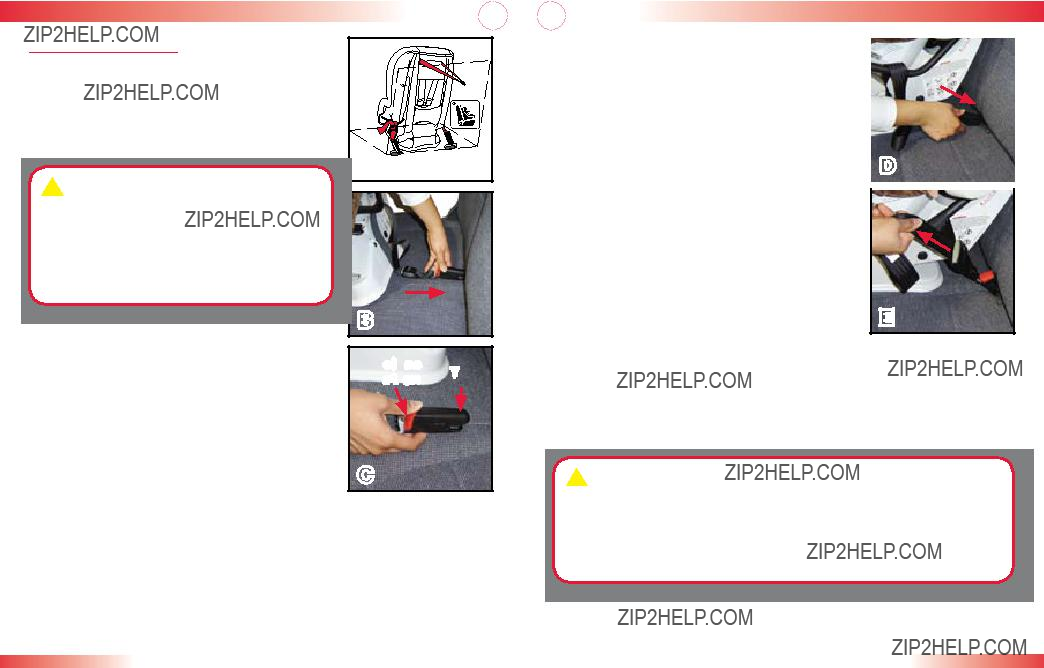
Installation:
LATCH Installation
??? Figure A illustrates a
??? Verify that your vehicle is equipped with LATCH anchors. If LATCH anchors are not available, you must use vehicle belt installation methods.
a
 WARNING!
WARNING!
???This child seat must not be used
???This child seat must be in full upright position when installed
Installation:
1If stored, remove the LATCH connectors from the storage slots under the cover (page 29) and pass them through their adjacent belt slots.
2Press and hold the first LATCH adjuster release button, then pull the LATCH strap to full length. Repeat for the remaining LATCH connector.
3Remove the
4Place the child seat
b
Release
Button Top
c
 WARNING! Refer to your vehicle owner???s manual or contact the vehicle manufacturer for the maximum weight rating for
WARNING! Refer to your vehicle owner???s manual or contact the vehicle manufacturer for the maximum weight rating for
TIP: You may need to raise or remove the vehicle head restraint to achieve best fit of the child seat.
5 Attach one LATCH connector to its adjacent vehicle LATCH anchor (Fig. B) in the upright position (Fig. C).
???An audible click confirms attachment.
???Ensure that the LATCH strap is not twisted.
TIP: You may need to turn the back of the child seat toward you for easier access to the vehicle LATCH anchor.
18
their LATCH anchors. Use vehicle belt (not LATCH connectors) for installations with children who weigh more than the vehicle LATCH anchor limit. Unless specified otherwise by the vehicle manufacturer, assume a 40 lbs (18.1 kg) child is the vehicle LATCH anchor limit.
19
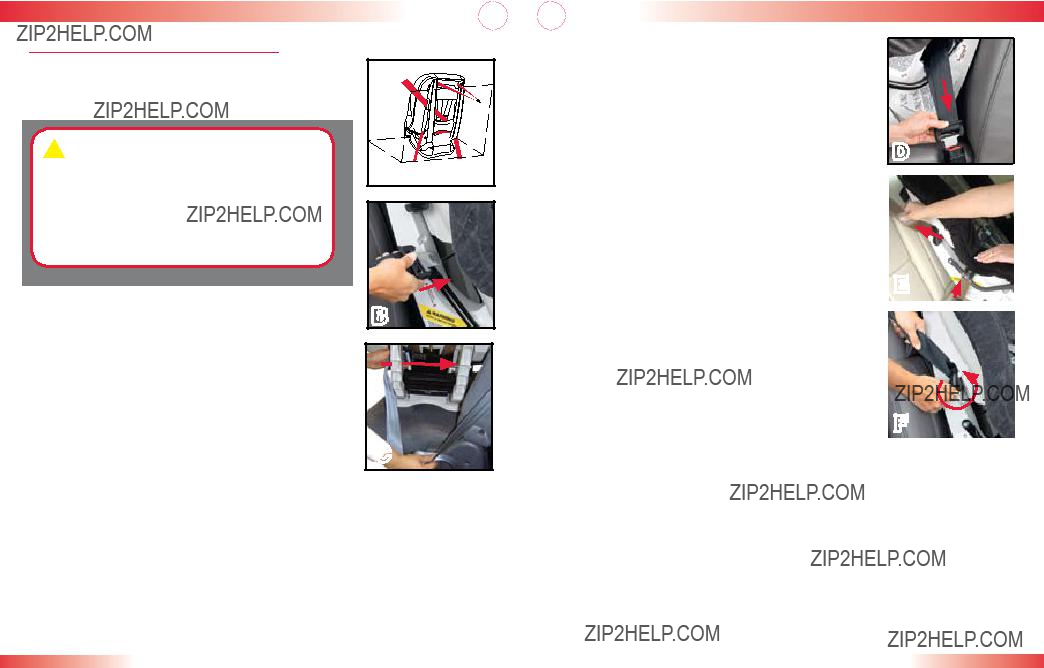
Installation:
Installation:
???Figure A illustrates a
???When not in use, always store the LATCH connectors in the storage slots. See page 29.
 WARNING!
WARNING!
???This child seat must not be used
???This child seat must be in full upright position when installed
1If the vehicle is equipped with a designated tether anchor for the chosen seating position, remove the
IMPORTANT: Britax recommends that the
2 Place the child seat
TIP:You may need to raise or remove the vehicle head restraint to achieve best fit of the child seat.
B
C
3 Rotate the
4 Pull vehicle belt out, then pass it over the LATCH bar, through the
TIP:Turning the back of the child seat toward you can make routing the vehicle belt easier (Fig. C).
20
21

Installation:
??? Figure A illustrates a typical
???This child seat must be in full upright position when installed
1If the vehicle is equipped with a designated B tether anchor for the chosen seating position,
remove the
IMPORTANT: Britax recommends that the
2 Place the child seat
TIP:You may need to raise or remove the vehicle head restraint to achieve best fit of the child seat.
3 If the vehicle is equipped with a designated tether anchor for the chosen seating position, remove the
Installation:
4 Pull the vehicle belt out, then pass it under the LATCH bar, through the
TIP:Turning the back of the child seat toward you can make routing the vehicle belt easier (Fig. D).
5 Verify that the vehicle belt is not twisted, is routed under the LATCH bars, then buckle C (Fig. B).
6Push the child seat firmly into the vehicle seat while removing slack from the vehicle belt (Fig. C).
7
seating position. Remove all slack from the D tether to secure. Store excess webbing in the tether pouch. See pages
8Verify that the vehicle belt is tight, locked and the child seat is secure.
???The child seat is secure when it cannot be moved
 WARNING! Do not use this seat with a
WARNING! Do not use this seat with a
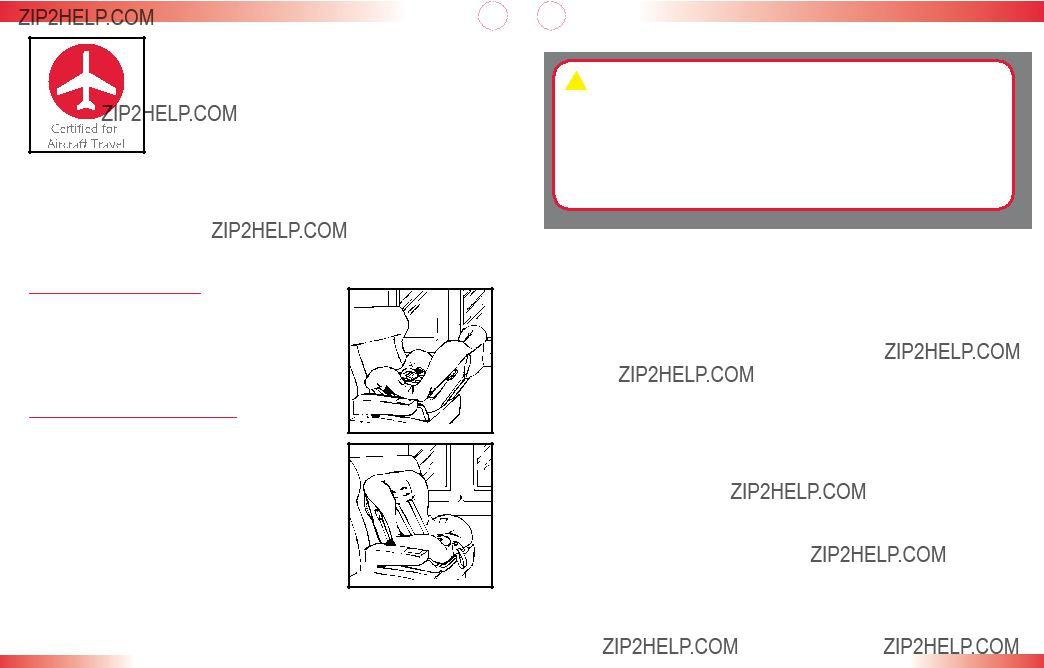
Installation: Aircraft
This child seat is certified for aircraft use. Most airlines in the U.S. and Canada will allow the use of a child seat as long as it is labeled as an approved child seat for airline use and fits properly on the aircraft seat. Contact the airline about their policy prior to traveling.
The FAA recommends that a child weighing up to 40 pounds (18.1 kg) use a certified, harnessed child seat while traveling on an aircraft.
Install your child seat in a window seat to avoid blocking the aisle.
If the aircraft lap belt is too short, ask the flight attendant for a belt extender.
For
44To aid installation on aircraft, open the rear- facing
b 

Installation:
Safety Information
 WARNING!
WARNING!
???When using the child seat in
???DO NOT modify the vehicle without advice from the vehicle manufacturer if a tether anchorage is not available.
IMPORTANT:
???Britax recommends that the tether be used at all times. Using the tether will improve the stability of the child seat and reduce the risk of injury.
???If your vehicle does not currently have a tether anchor attachment, refer to your vehicle owner???s manual or contact the vehicle manufacturer for assistance.

Installation:
Installation:
Using the
1 Consult your vehicle owner???s manual for designated tether anchorage locations.
2Locate the tether on the rear of the child seat and remove the tether from the pouch.
3Place the tether up and over the child seat back.
4Install the child seat using the LATCH system or the vehicle belts according to the instructions in this manual.
5Tilt the tether release tab then pull to fully extend the tether strap into a ???V??? shape.
6Locate the hook on the strap and attach the tether hook to the vehicle???s designated tether anchor.
???See figure A for a
???See figures B and C for a
Tether Connector Strap
 WARNING! Only use the tether connector strap for a rear- facing tether installation.
WARNING! Only use the tether connector strap for a rear- facing tether installation.
Because every vehicle model is different, sometimes you cannot find a location to properly anchor the tether. Use the tether connector strap to assist in creating an anchor point (Fig. D).
1 Find a fixed vehicle anchor point that is bolted to the floor.
??? If you cannot find an acceptable location to create an anchor point, contact the vehicle manufacturer to identify a suitable tether connection point.
2 Route the strap around the fixed vehicle anchor point.
IMPORTANT: The tether should be hooked over, not under, the vehicle tether anchor.
7 Pull the tether adjuster strap to remove all slack. Roll up excess webbing and store in tether pouch.
8 Verify there is tension in the tether strap and that child seat is properly secured.
???The child seat is secure when it cannot be c moved
1 in. (2.5 cm) at the belt path.
3Take the metal
strap (Fig. D).
4Pull the metal
5Use the
NOTE: Store the tether connector strap in the tether pouch when not in use.
d

Installation:
The
Child Seat Functions
Storing the LATCH Connectors
When the LATCH connector is not in use, lift the cover to access the LATCH storage slots (Fig. D). Fold the LATCH adjuster and the connector, then slide each set into the adjacent slot.
Recline Adjustment
Pull the recline handle (Fig. E) then slide the child seat shell into the desired position. Release the E recline handle, then verify the child seat has locked into position.
 WARNING!
WARNING!
???This child seat must be in the recline position when installed
???Child seat must be in full upright position when installed
NOTE: It will be necessary to loosen the tether, vehicle seat belt, and/or LATCH strap before adjusting the recline position. The tether, vehicle seat belt, and/or LATCH strap must be properly

Child Seat Functions
Child Seat Functions
Chest Clip
Fastening the Chest Clip
Fasten the chest clip by pushing the two halves together until a positive click is heard (Fig. A).
Releasing the Chest Clip
1Squeeze the middle tabs together (Fig. B).
2Pull the two pieces apart.
Adjusting the Chest Clip
1Slide the chest clip up or down (Fig. C) on the harness so it is positioned at the middle of the child???s chest, level with the child???s armpits.
2Slide the HUGS??? chest pads and comfort pads to a comfortable location for the child.
A
B
Harness Buckle
Fastening the Harness Buckle
1Hold the harness buckle with one hand.
2Use your other hand to insert one buckle tongue at a time into the harness buckle (Fig. D).
???A proper connection is confirmed with a positive click after inserting each buckle tongue.
Releasing the Harness Buckle
1 Brace the rear of the harness buckle with one hand.
2 Use your thumb to press the release button and slide both buckle tongues to remove from the buckle (Fig. E).
IMPORTANT: Periodically clean the harness buckle to ensure safe operation (page 37).
D  x 2
x 2 
E
HUGS??? Chest Pads
 WARNING! HUGS??? chest pads must be installed for
WARNING! HUGS??? chest pads must be installed for
C
Adjusting Harness Slot Height
IMPORTANT: See Important Harness Adjustments on pages
1Loosen the harness by lifting the harness adjuster lever while pulling the harness straps forward as F
far as possible (Fig. F).
2From the rear of the child seat, unhook the shoulder harness from the harness yoke (Fig. G).
3Pull the harness straps through the shell, foam, and cover to the front of the child seat.
4Thread the harness straps through the appropriate
harness slots in the cover, foam, and child seat G shell (Fig. H).
5Reattach the harness straps to the harness yoke (Fig. G).
6Pull the
7Verify that all straps are threaded at the same

Securing Your Child
Buckling and Tightening the Harness
1 Loosen the harness by lifting the harness adjuster release lever located on the front of the child seat while pulling both shoulder straps forward (Fig. A).
2Release the chest clip by squeezing the tabs and sliding the pieces apart (Fig. B).
3Unfasten the harness buckle by pressing the A
release button and sliding the tongues out.  4 Move the harness straps to the side of the
4 Move the harness straps to the side of the
child seat.
??? Use the harness holders located on the straps
and both sides of the cover to aid in holding the straps.
IMPORTANT: Remove bulky coats and/or jackets before putting the child in child seat. Adjust the B harness to fit the clothes the child is wearing.
5 Place child in the child seat.
6Position harness straps around the child and fasten harness buckle (Fig. C) and chest clip (Fig. D).
???Proper connection of the harness buckle is confirmed with a positive click after inserting each buckle tongue.
???If the buckle will not fasten with an audible click after insertion of each buckle tongue, C
the harness buckle or adjuster area may be clogged with food, drink or other debris that needs to be removed. See page 37 for cleaning instructions.
D
32
Securing Your Child
7Slide the HUGS??? chest pads down towards the buckle.
Important checklist before tightening the harness:
99Check for proper harness height (see pages 6 ??? 7). 99Remove slack from around the child???s upper thighs. 99Remove slack between the Hugs??? chest pads and the buckle.
8Slowly pull the adjuster strap 

until the harness is snug around the child. The harness adjuster will click when the harness is snug.
NOTE: The Click & Safe??? Snug Harness Indicator is an audible aide to help determine when the harness is within range of appropriate snugness. When tightening the harness, this audible click provides
extra assurance that the harness is snug.
strap again until another click indicates a snug harness.
10Position the chest clip at the middle of the child???s chest, level with the child???s armpits (Fig. E).
11Verify that the harness is not twisted and the child is properly secured.
IMPORTANT: Always pull on the harness after securing the child to ensure the buckle tongues are secure in the harness buckle.
33

Care and Maintenance
Cover Removal
WARNING! Do not take apart the harness. Never remove the buckle tongues from the harness. They cannot be reattached after removal. If reassembled incorrectly,
the child seat may not perform as intended.
1 Loosen the harness by lifting the harness adjuster lever while pulling the shoulder straps forward as far as possible.
2 Unhook the shoulder straps from the harness yoke on the rear of the child seat (Fig. A).
3 Pull the upper harness straps through the shell A and cover to the front of the child seat.
4Remove the buckle and belly pad (page 36).
5Gently remove the upper portion of the cover. Be careful not to damage the
6Pull the lower harness straps, buckle tongues, HUGS??? chest pads, and chest clip through the lower slots in cover.
7Remove the entire cover from the child seat.
For additional demonstration please visit www.BritaxUSA.com.
Refitting the Cover
To refit the cover, reverse the above directions. Make sure that the shoulder straps are not twisted, and are threaded properly through the chest clips, cover, foam and shell.
Care and Maintenance
Cleaning the Cover
???HAND WASH using cold water and mild soap.
???LINE or
???DO NOT bleach, machine wash, machine dry or iron.
Cleaning the Shell
???SPONGE CLEAN using warm water and mild soap.
???TOWEL DRY
???DO NOT use solvents or abrasive cleaners.
Cleaning the Harness
???SPONGE CLEAN using warm water and mild soap.
???TOWEL DRY
???DO NOT bleach, machine wash, machine dry or disassemble the harness.
Cleaning the Harness Adjuster
Periodically check the adjuster area to be sure it is clean and free of food, drink or other debris. If debris is present, it must be removed to prevent interference with the adjuster mechanism.
???BRUSH AWAY LOOSE DEBRIS using a
???SPONGE CLEAN using warm water and a mild soap.
???TOWEL DRY
???DO NOT use solvents, abrasive cleaners or disassemble the harness.

Care and Maintenance
5Push the retainer through the slots in the shell and cover, to the top of the child seat.
1Locate the slot in cover and shell for the harness buckle.
2Turn the buckle retainer so the short side will fit through the slot in the cover and the child seat shell (Fig. A).
3Push the retainer through the slots in the shell and cover, to the bottom of the child seat.
4Pull the harness buckle away from the child seat until tight and verify the strap is not twisted and the release button is facing outward.
Care and Maintenance
Cleaning the Harness Buckle
If a child eats and drinks while in the child seat, the harness buckle may need to be periodically checked and cleaned of any food, drink or other debris.
D

This child seat was manufactured by Britax Child Safety, Inc. Britax?? warrants this product to the original retail purchaser as follows:
LIMITED
This product is warranted against defective materials or workmanship for one year from the date of original purchase. Proof of purchase is required. The exclusive remedy for this warranty is that Britax will, at its option, provide repair or replacement components for this product or replace the product. Britax reserves the right to discontinue or change fabrics, parts, models or products, or to make substitutions.
To make a claim under this warranty, contact Britax Consumer Services at
PLEASE COMPLETE AND MAIL THE OWNER REGISTRATION CARD WITHIN (30)
DAYS OF PURCHASE OR VISIT WWW.BRITAXUSA.COM/REGISTRATION.
WARRANTY LIMITATIONS
This warranty does not include damages which arise from negligence, misuse or use not in accordance with the product instruction.
The use of
LIMITATION OF DAMAGES
The warranty and remedies as set forth above are exclusive and in lieu of all others, oral or written, express or implied. In no event will Britax, or the retailer selling this product, be liable for any damages, including incidental or consequential damages, arising out of the use or inability to use this product.
LIMITATIONS OF WARRANTIES AND OTHER WARRANTY TERMS AND STATE
LAWS
Any implied warranties, including implied warranties of merchantability and fitness for a particular purpose, shall be limited to the duration and terms of the express written warranty. Some states do not allow limitations on how long an implied warranty lasts or the exclusion or limitation of incidental or consequential damages, so the above limitations may not apply. This warranty gives you specific legal rights, and you may
have other rights, which vary from state to state. Neither Britax, nor the retailer selling this product, authorizes any person to create for it any other warranty, obligation, or liability in connection with this product.
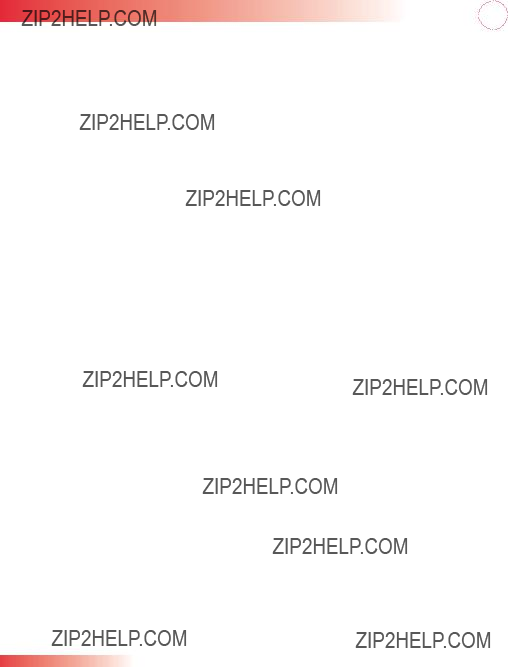
40

IMPORTANT:
??? DOUBLE CHECK EVERY TIME YOU
USE THIS CAR SEAT.
Double Check Car
???Check that the LATCH or vehicle seat belts connections to the vehicle are tight and locked.
???Verify the car seat cannot be moved
Double Check
???Tug on the buckle to ensure proper locking.
???Confirm harness straps are snug and over both shoulders and hips. You should not be able to pinch excess harness strap webbing at the child???s shoulder.
???Make sure the chest clip is properly fastened and positioned in the middle of the child???s chest at armpit level.